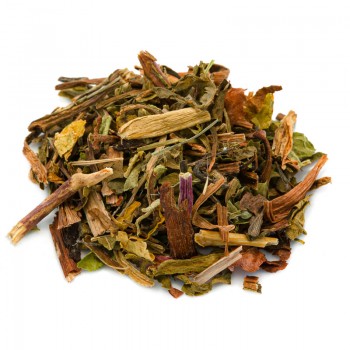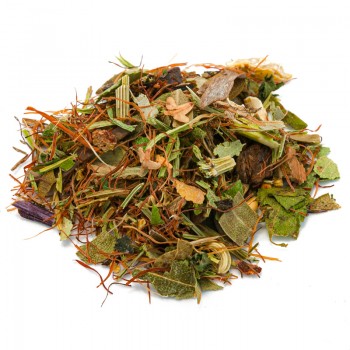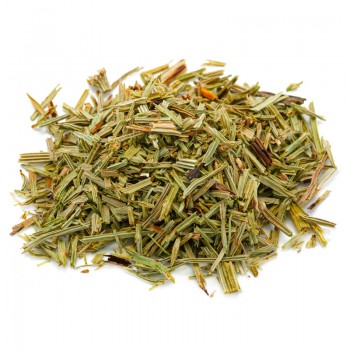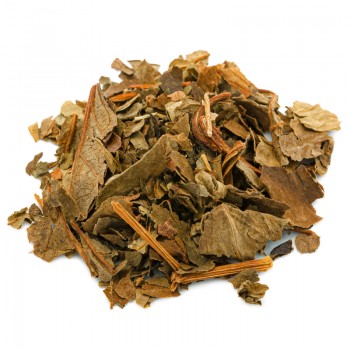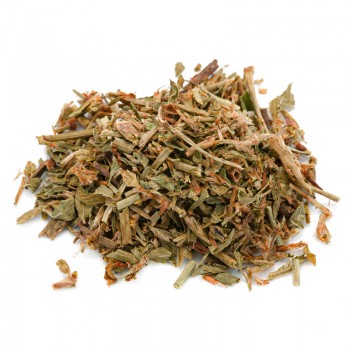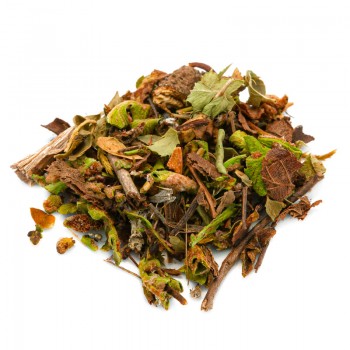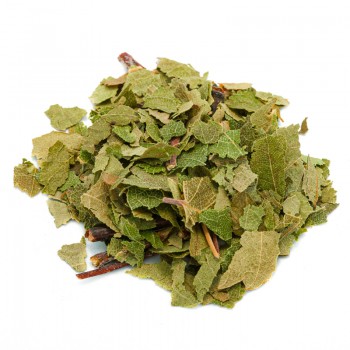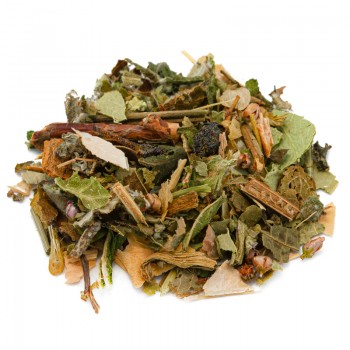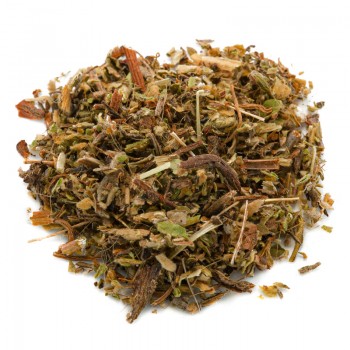The elderberries are mixed with the classic plum, to give a more delicate and original flavor to this infusion.
Plum and elderberry infusion: properties and benefits
Elderberry is a plant with many therapeutic properties recognized by all. It is often considered beneficial for treating cold and flu symptoms.
Elderberries, with their antioxidants with beneficial effects, help the body in the immune response and mitigate the symptoms of flu states (headache , muscle pain, nasal congestion, etc.). Furthermore, the diaphoretic properties , that is, they make you sweat, favor the elimination of toxins.
In folk medicine, dried berries have been used for centuries as a natural antiseptic, also to treat infections, headaches, dental pain, heart pain and nerve pain. .
This infusion can also support the immune system, thanks to vitamin C and vitamin B6. These qualities useful in case of flu are also enhanced by the other components of the infusion - currants, cranberries and bilberries, orange, rose petals.
A quality that, however, has remained even in recent times, is that of elderberry as a laxative and diuretic . The laxative function is amplified by the other aromas and components, and refers to what was formerly known as Edelberry Rob - an elderberry preserve with plums and apples: excellent laxative and warming against coughs and colds!
The consumption of this infusion is recommended, albeit in moderate quantities, even during a diet, for its diuretic and purifying properties. Among the diuretic teas, this one with elderberry and plum allows you to stimulate diuresis in a gentle but effective way, to eliminate toxins from the body.
Elderberry is also a nutrient rich in antioxidants such as anthocyanins, which give it its characteristic dark purple-black color and exhibit anti-inflammatory effects.
During normal vital metabolism, we know that the body releases reactive molecules that can accumulate in the body, the so-called free radicals. These can cause oxidative stress to cells, and damage them. For this reason, the natural antioxidants in some foods can be beneficial. The elderberry and plum herbal tea shows different components such as vitamins, phenolic acids, anthocyanins and flavonoids, able to remove free radicals.
Combined with the incredible properties contained in prunes and the nutrients of other fruits, elderberry creates a beneficial drink.
Origins and History of cultivation
Elderberry is one of the most used medicinal plants by different populations. Originally from Europe, it is now widely cultivated in many other parts of the world. Traditionally, they used it to treat fevers and rheumatism, while the ancient Egyptians used berries and flowers to improve their complexion and heal burns.
Elderberry is still harvested and used in folk medicine in many parts of Europe today. Elderberries, for example, are widely used in Austria and South Tyrol to make syrups, compotes, jams .
Various parts of the elderberry tree have been used for medicinal and gastronomic purposes. The berries are tart and must be cooked to eat, while the flowers have a delicate muscat aroma and can be eaten raw or cooked. They are boiled with sugar to make a sweet syrup, or tea infusions.
Historically, flowers and leaves have been used to relieve pain, swell, inflame, stimulate diuresis and induce sweating. The bark was used as a diuretic, laxative and to induce vomiting.
In addition, the berries can be cooked and used to make juices, jams, sauces, cakes and elderberry wine.
Other components of this infusion are currant, cranberries, bilberries, orange, rose petals, plum. All plants widely used in herbal medicine to promote the well-being of the circulation, the immune system and give an intense perfume to the infusion.
Plant and flowers
Elderberry refers to different varieties of the Sambucus tree, which is a flowering plant belonging to the familyia of the Adoxaceae. The most common type is Sambucus nigra, also known as European elderberry or black elderberry.
Grows to about 9 meters in height, features clusters of small white or cream colored flowers known as elderflower. It gives the berries in small black or blue-black clusters. Other varieties include American elderberry, dwarf elderberry, blue elderberry, Danish elderberry, red fruit elderberry.
The cranberry plant can derive from evergreen dwarf shrubs, part of the Oxycoccus subgenus of the Vaccinium genus: Vaccinium microcarpum or Oxycoccus microcarpus, Vaccinium oxycoccos or Oxycoccus palustris. They are found in North America and Chile, Northern Europe and North Asia.
The Rose is a plant of the Rosaceae family, native to Asia. There are thousands of cultivars of this plant, famous for its flowers, which can be of many shapes and colors. It can appear as an erect shrub, climbing, thorny or not. The flowers of the rose change in size and color from white to yellow and red.
Black currant (Ribes nigrum) is a shrub of the Grossulariaceae family cultivated for its edible berries. It is native to the temperate areas of Europe and northern Asia, where it prefers moist and fertile soils.
The blueberry plant is the Vaccinium sect. Cyanococcus, a shrub that produces bluish or purple berries known as blueberries. There is a variety of North America, and a species typical of Northern Europe, where it grows spontaneously between 900 and 1,800 meters, in the woods.
The orange tree is the Citrus sinensis belonging to the Rutaceae family. Fruits are sweet oranges to stand out from bitter oranges. Many scholars think that orange is a plant - hybrid, a cross of Asian origin between pomelo and mandarin.
Nutritional values of the plum and elderberry infusion
Elderberries are a food rich in antioxidants. They show a high content of vitamin C, phenolic acids, carotenoids, phytosterols, anthocyanins, flavonoids such as quercetin, kaempferol and isoramnetina, ursolic acid, rutin.
Among the active constituents of elderberry fruits, there are other vitamins (A, B1, B2, B6, B9, E), trace elements such as copper, zinc, iron and minerals such as potassium, calcium and magnesium .
How to use the ingredients in the herbal tea
The infusion is obtained by putting the mixture of plum and elderberry in a cup (250 ml), about 3-5 grams, with water at 100 ° C. Leave to infuse for 10 to 12 minutes, before drinking the herbal tea.
Add honey or sugar if desired.
Plum and elderberry infusion: side effects and contraindications
The elderberry and the fruits contained in the infusion are safe if taken as indicated in the doses, and for a not too long period of time.
Remember that elderberry is not safe when consuming leaves, stems or fruits that are not cooked or prepared for infusion. This can cause nausea, vomiting and diarrhea, or more serious side effects when consumed in large quantities.
Common side effects can also include stomach cramps and a runny nose. The interaction of this infusion for pregnant or lactating women is not known.

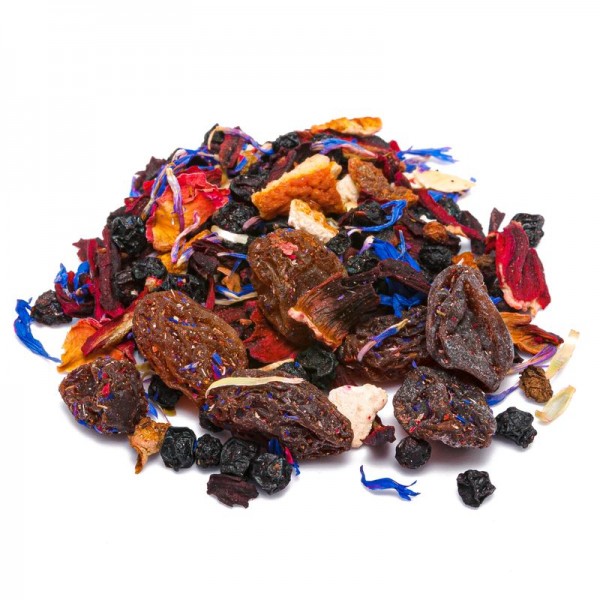









 No reward points for this product.
No reward points for this product.

